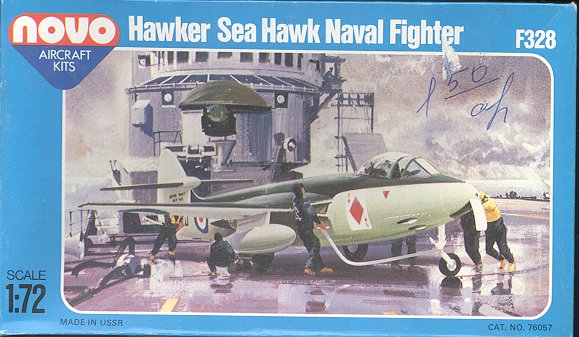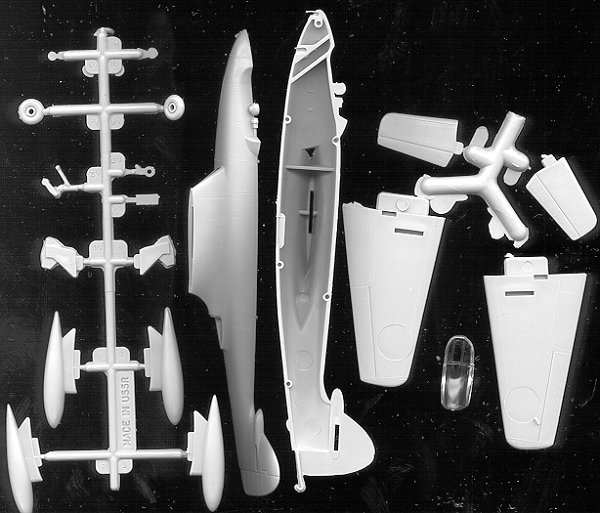
|
KIT: |
Novo 1/72 Hawker Sea Hawk |
|
KIT # |
F 328 |
|
PRICE: |
1.50 rubles |
|
DECALS: |
I knew something was missing... |
|
REVIEWER: |
Scott Van Aken |
|
NOTES: |
Frog mold |

|
HISTORY |
|
THE KIT |

How many of you know all the 1/72 Sea Hawk kits made? Not many hands. Well, starting from today and working back there is the Special Hobby/MPM version released just about a year ago (2003). Then there is a huge time gap of at least 30 years to Frog and Airfix. Both of them are a bit, well basic. Frog never claimed to produce kits of the highest complexity and the Airfix version was from their 1960s run of kits when a vast majority of their catalogue was produced. Here is a link to a review of that Airfix kit.
In terms of detail, the Airfix kit has it all over the Frog version. For one thing, Airfix provides the builder with gear wells, something that Frog found spurious. Same goes for a cockpit. Frog molded the pilot head so that one would have something to see through the rather clear canopy. The kit also is nice enough to supply the location of the roundels on the wings and fuselage. I suspect that it is a way to 'hide' the ejectors on the wings as those roundel marks are rather deep!
There are a pair of drop tanks for under the wings that are already mounted on the pylons. The intake area is rather small, but there is lots of room to open them up with a bit of knife work. Exhausts are molded solid but again, a bit of drilling will open them up. Might even want to stick in some tubing. Main gear struts are molded as part of the very thick gear door assembly. This will need some weight to keep from tail sitting.
Instructions are the old Frog ones printed on newsprint quality paper that Eastern Bloc countries were so fond of using. The history section was replaced by general specs in Russian. I'd like to tell you about the decals as the back of the box shows a paint and markings diagram for an 806 squadron plane. In fact, the entire box looks just exactly like the Frog one, but with Novo printed on it. Unfortunately, like so many Novo kits of this era, the decals were not included. I guess that was too much of an expense or something. Modelers in Soviet Russia were expected to be tough and resourceful; painting on markings was obviously a requirement, unless one managed to smuggle some aftermarket sheets from the decadent West.
|
CONCLUSIONS |
It's kind of nice to look at old kits like this. Only a few will really end up building them since often there are more modern replacements, but still, if you have kids, these are perfect for them!
If you would like your product reviewed fairly and quickly by a site that has nearly 250,000 visitors a month, please contact me or see other details in the Note to Contributors.